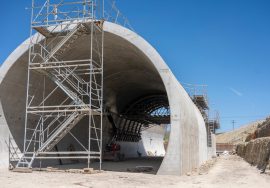
Real-Time Cost Tracking in Projects
Real-Time Cost Tracking in Projects
Real-time cost tracking in projects is the continuous process of monitoring and updating financial data as expenses occur, giving project managers and stakeholders immediate visibility into how budgets are performing. This level of live expense tracking is essential in dynamic project environments where delays, material price fluctuations, or scope changes can affect overall cost projections. Real-time cost tracking empowers faster decision-making, enhances transparency, and prevents financial surprises.
In India, the National Informatics Centre (NIC) supports digital project tracking platforms across government departments to improve budget governance and real-time financial monitoring. Unlike traditional cost tracking systems that rely on periodic updates and manual reporting, real-time systems collect data automatically from procurement systems, contractor timesheets, invoices, and financial software to deliver a clear, updated picture of how much has been spent, what has been committed, and what remains in the budget. This helps teams detect overspending early, validate vendor claims quickly, and make informed changes without waiting for end-of-month reports.
Why Real-Time Cost Tracking Matters
Projects that rely on delayed cost data often suffer from late interventions, unnoticed overruns, and reactive decision-making. Real-time cost tracking offers immediate alerts on deviations from the budget and enables managers to respond quickly to resource shortages, billing discrepancies, or schedule delays. It enhances stakeholder confidence by providing accurate, on-demand financial status.
It improves forecasting accuracy by continuously adjusting the Estimate to Complete (ETC) and Estimate at Completion (EAC) based on current spending. It strengthens internal controls by eliminating data gaps and reducing manual entry errors. Real-time visibility also supports better contract management by validating claims and milestone-based payments with live financial data.
Core Features of a Real-Time Cost Tracking System
An effective real-time cost tracking solution must integrate with procurement, scheduling, accounting, and vendor management systems. It should support real-time data feeds for labor hours, material receipts, subcontractor billing, and overhead charges. Dashboards should display key metrics like budget consumption percentage, cost variance, cost performance index (CPI), and pending approvals.
Alerts and notifications must trigger when spending exceeds thresholds. Role-based access control ensures that each stakeholder sees only the relevant financial data. Mobile access is also important for site-based teams. Audit trails, automated reporting, and customizable analytics help ensure compliance and enable strategic reviews.
AMS India: Real-Time Cost Tracking Solutions
At AMS India, we help organizations implement advanced real-time cost tracking systems that align with their project management and financial control goals. Our services include integration of real-time dashboards with procurement and accounting systems, configuration of project-specific cost codes and expense workflows, automation of cost capture from vendor invoices, timesheets, and material logs, variance analysis and EVM tracking for live performance review, forecasting models updated with real-time progress data, and training for teams on using dashboards and interpreting insights.
Whether your project involves urban infrastructure, smart cities, or industrial development, contact AMS India for a seamless digital cost tracking system tailored to your needs.
Benefits of Real-Time Cost Visibility
Immediate access to cost data enables better cash flow planning and fund utilization. It reduces approval delays and improves accountability across departments. It ensures that scope changes are immediately reflected in the budget impact. It allows for faster dispute resolution with contractors and suppliers. It enhances audit readiness with well-documented, time-stamped financial records. It improves project delivery by enabling corrective actions before issues escalate. Projects with real-time tracking can demonstrate better governance, often leading to stronger stakeholder confidence and smoother regulatory compliance.

Best Practices for Implementing Real-Time Tracking
Begin by aligning your project’s Work Breakdown Structure (WBS) and Cost Breakdown Structure (CBS) to create a strong foundation for financial tracking. Select tools that integrate easily with your accounting and procurement systems. Standardize data input formats to ensure consistency. Set budget thresholds and escalation workflows to alert managers before overspending occurs. Conduct regular cost review meetings using real-time dashboards. Ensure all resource hours, materials, and contractor payments are logged in the system as they happen. Monitor KPIs such as CPI, cost variance, and forecast accuracy continuously. Secure your data with audit logs, user permissions, and cloud backup features. Train your team on how to interpret live data and take timely actions.
Conclusion
Real-time cost tracking in projects is not just a technological advancement—it is a strategic necessity for cost-efficient and transparent project delivery. It provides the insights needed to control spending, adjust forecasts, and make quick, informed decisions that keep projects financially healthy. With rising project complexity and tighter margins, real-time cost visibility is becoming the standard for both private and public sector initiatives. At AMS India, we bring the technology, experience, and best practices to implement cost tracking systems that empower your teams to deliver on budget. Let us help you gain financial control, prevent overruns, and build a culture of real-time accountability in your project environment.
Read more related articles to enhance your knowledge and make informed decisions
Project Cost Management: Control Costs and Maximize Value
Project Budgeting Strategies for Efficient Financial Control








